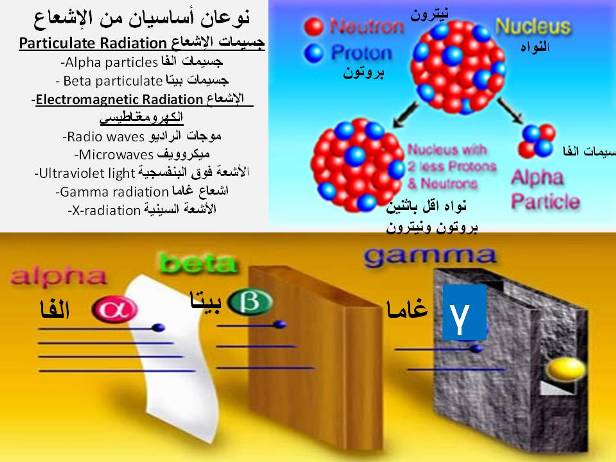| front |1 |2 |3 |4 |5 |6 |7 |8 |9 |10 |11 |12 |13 |14 |15 |16 |17 |18 |19 |20 |21 |22 |23 |24 |25 |26 |27 |28 |29 |30 |31 |32 |33 |34 |35 |36 |37 |38 |39 |40 |41 |42 |43 |44 |45 |46 |47 |48 |49 |50 |51 |52 |53| 54 |review |
 |
http://www.ndt-ed.org/EducationResources
Radiation is a form of energy. There are two basic types of radiation. One kind is particulate radiation, which involves tiny fast-moving particles that have both energy and mass. Particulate radiation is primarily produced by disintegration of an unstable atom and includes Alpha and Beta particles. Alpha particles are high energy, large subatomic structures of protons and neutrons. They can travel only a short distance and are stopped by a piece of paper or skin. Beta particles are fast moving electrons. They are a fraction of the size of alpha particles, but can travel farther and are more penetrating. Particulate radiation is of secondary concern to industrial radiographers. Since these particles have weight and are relatively large, they are easily absorbed by a small amount of shielding. However, it should be noted that shielding materials, such as the depleted uranium used in many gamma radiography cameras, will be a source of Beta particles if the container should ever develop a leak. If a leak were to occur, the material could be transferred to the hands and other parts of a radiographer’s body, causing what is known as particulate contamination. This is the reason periodic “leak” and “wipe tests” are performed on equipment. The second basic type of radiation is electromagnetic radiation. This kind of radiation is pure energy with no mass and is like vibrating or pulsating waves of electrical and magnetic energy. Electromagnetic waves are produced by a vibrating electric charge and as such, they consist of both an electric and a magnetic component. In addition to acting like waves, electromagnetic radiation acts like a stream of small "packets" of energy called photons. Electromagnetic radiation travels in a straight line at the speed of light (3 x 108 m/s). |